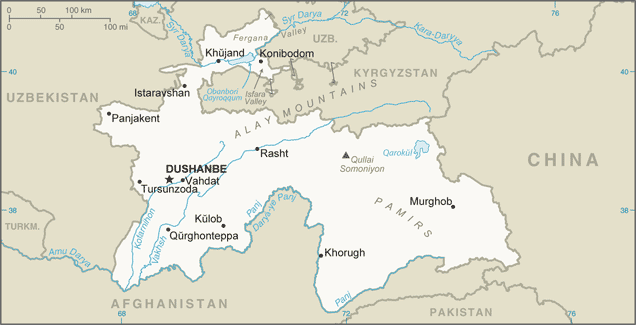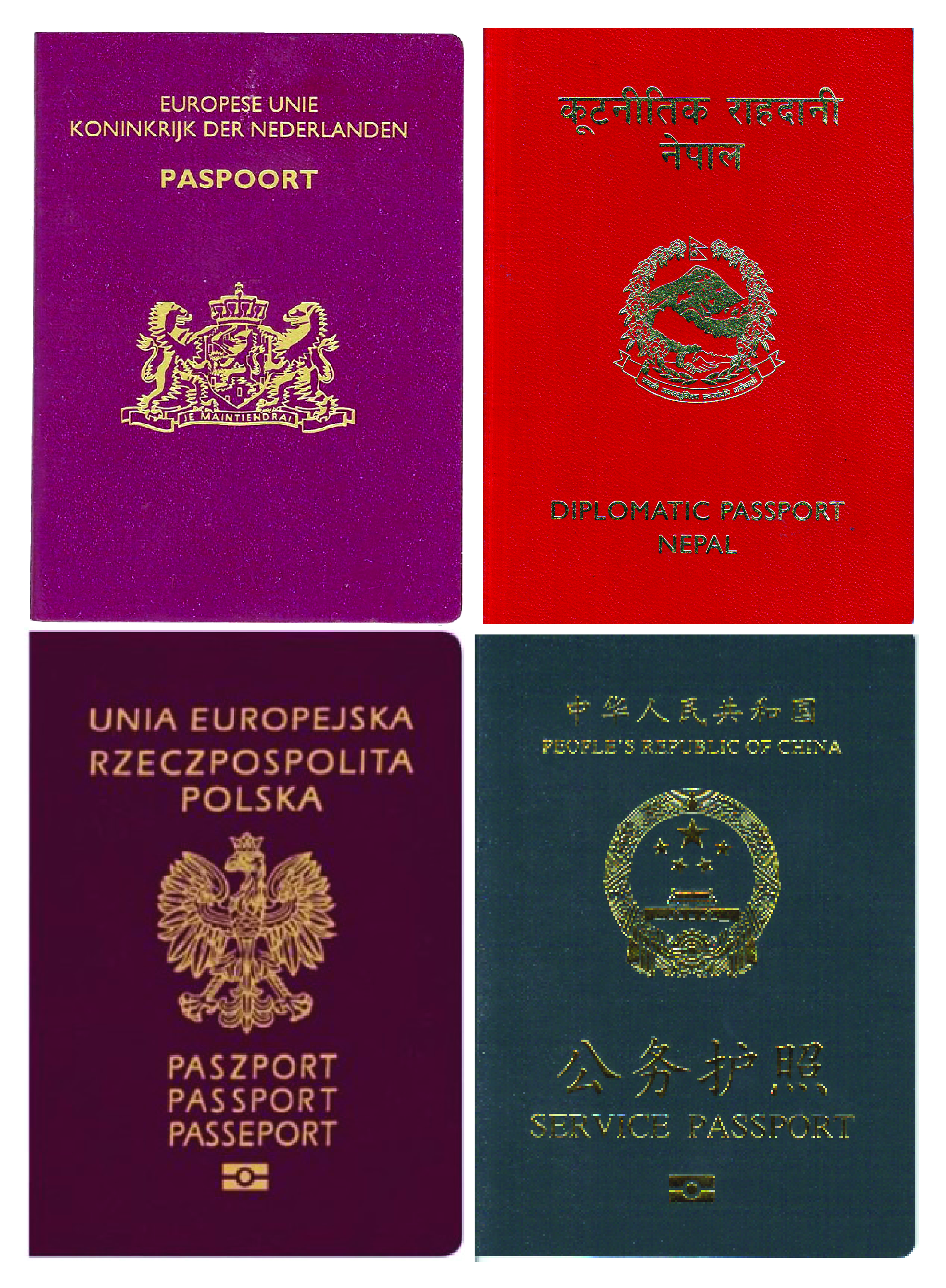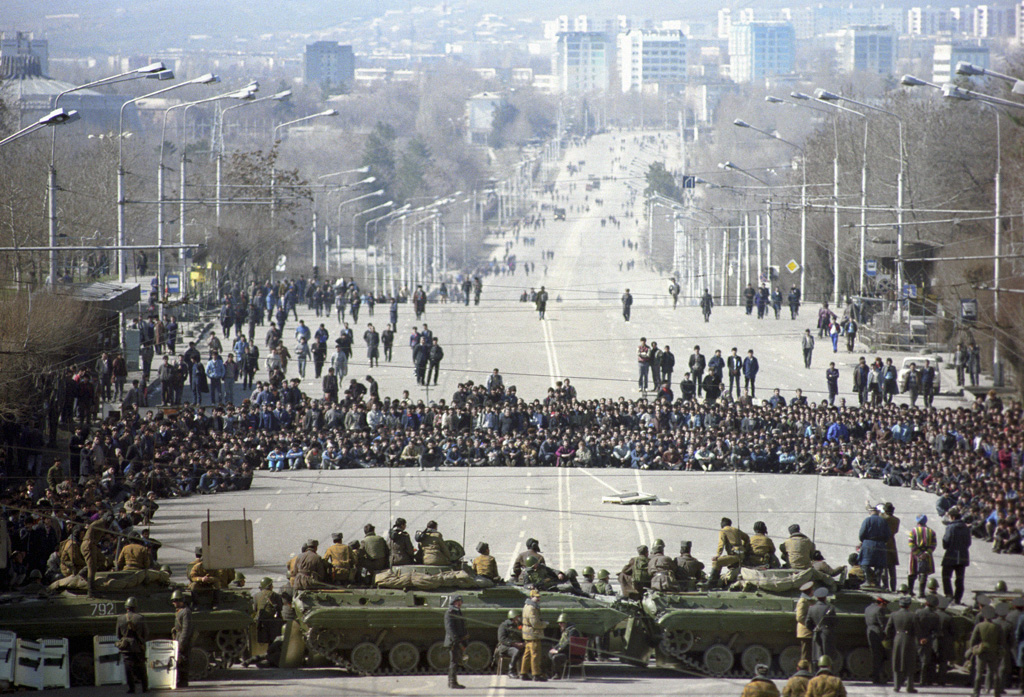|
Kulma Pass
The Kulma Pass ( Tajik: , ) or Qolma Pass, also referred to as Karasu Pass, is a mountain pass across the Pamir Mountains on the border between Murghob District, Gorno-Badakhshan Autonomous Region in Tajikistan and Taxkorgan Tajik Autonomous County, Kashgar Prefecture, Xinjiang Uygur Autonomous Region in China. Asian Highway AH66 runs through the pass, which provides for the only modern day overland border crossing along the 450 km boundary between the two nations. The pass has an elevation of and opens from the north to the southeast, and is 500 m wide from north to south and 1 km in length from east to west with a gentle incline not exceeding 20 percent. On the Tajik side, the pass is 80 km by road to Murghab and about 850 km to Dushanbe. On the Chinese side, the pass is 13.9 km from Karasu (), a port of entry on the Karakorum Highway which leads to Tashkurgan (60–70 km) and Kashgar (220 km). The pass is open from the 16th to the ... [...More Info...] [...Related Items...] OR: [Wikipedia] [Google] [Baidu] |
Pamir Mountains
The Pamir Mountains are a mountain range between Central Asia and Pakistan. It is located at a junction with other notable mountains, namely the Tian Shan, Karakoram, Kunlun, Hindu Kush and the Himalaya mountain ranges. They are among the world's highest mountains. Much of the Pamir Mountains lie in the Gorno-Badakhshan Province of Tajikistan. To the south, they border the Hindu Kush mountains along Afghanistan's Wakhan Corridor in Badakhshan Province, Chitral District, Chitral and Gilgit-Baltistan regions of Pakistan. To the north, they join the Tian Shan mountains along the Alay Valley of Kyrgyzstan. To the east, they extend to the range that includes China's Kongur Tagh, in the "Eastern Pamirs", separated by the Yarkand River, Yarkand valley from the Kunlun Mountains. Name and etymology Since Victorian times, they have been known as the "Roof of the World", presumably a translation from Persian language, Persian. Names In other languages they are called: ps, , ; k ... [...More Info...] [...Related Items...] OR: [Wikipedia] [Google] [Baidu] |
China–Tajikistan Border
The China–Tajikistan border is in length and runs from the tripoint with Kyrgyzstan following a roughly north–south line across various mountain ridges and peaks of the Pamir range down to the tripoint with Afghanistan. The border divides Murghob District, Gorno-Badakhshan Autonomous Region in Tajikistan from Akto County, Kizilsu Kyrgyz Autonomous Prefecture (to the north) and Taxkorgan Tajik Autonomous County, Kashgar Prefecture (to the south) in Xinjiang Uygur Autonomous Region, China. History The origins of the border date from the mid-19th century, when the Russian empire expanded into Central Asia and established control over the Lake Zaysan region. The establishment of the border between the Russian Empire and the Qing Empire, not too different from today's Sino-Kazakh/Kyrgyz/Tajik border was provided for in the Convention of Peking of 1860; the actual border line pursuant to the convention was drawn by the Treaty of Tarbagatai (1864) and the Treaty of Uliassuhai ( ... [...More Info...] [...Related Items...] OR: [Wikipedia] [Google] [Baidu] |
People's Daily
The ''People's Daily'' () is the official newspaper of the Central Committee of the Chinese Communist Party (CCP). The newspaper provides direct information on the policies and viewpoints of the CCP. In addition to its main Chinese-language edition, the ''People's Daily'' is published in multiple languages. History The paper was established on 15 June 1948 and was published in Pingshan, Hebei, until its offices were moved to Beijing in March 1949. Ever since its founding, the ''People's Daily'' has been under direct control of the CCP's top leadership. Deng Tuo and Wu Lengxi served as editor-in-chief from 1948 to 1958 and 1958–1966, respectively, but the paper was in fact controlled by Mao Zedong's personal secretary Hu Qiaomu. During the Cultural Revolution, the ''People's Daily'' was one of the few sources of information from which either foreigners or Chinese could figure out what the Chinese government was doing or planning to do. During this period, an editorial in t ... [...More Info...] [...Related Items...] OR: [Wikipedia] [Google] [Baidu] |
Ministry Of Commerce Of The People's Republic Of China
The Ministry of Commerce of the People's Republic of China (MOFCOM) is a cabinet-level executive agency of the State Council of China. It is responsible for formulating policy on foreign trade, export and import regulations, foreign direct investments, consumer protection, market competition ( competition regulator) and negotiating bilateral and multilateral trade agreements. It is in charge of the administration of foreign trade pursuant to the Foreign Trade Law. The current Commerce minister is Wang Wentao. History Before October 1949, the Ministry of Economic Affairs was the governing agency of the Republic of China on the mainland responsible for economic trade issues. The agency was created in 1931 and reorganized in 1937. In November 1949, a month after the People's Republic of China was established, the Chinese Communist Party formed the Ministry of Trade (贸易部) while the MOEA continued to operate in Taiwan and several other islands In August 1952, the Mini ... [...More Info...] [...Related Items...] OR: [Wikipedia] [Google] [Baidu] |
Institute For Security And Development Policy
An institute is an organisational body created for a certain purpose. They are often research organisations (research institutes) created to do research on specific topics, or can also be a professional body. In some countries, institutes can be part of a university or other institutions of higher education, either as a group of departments or an autonomous educational institution without a traditional university status such as a "university institute" (see Institute of Technology). In some countries, such as South Korea and India, private schools are sometimes referred to as institutes, and in Spain, secondary schools are referred to as institutes. Historically, in some countries institutes were educational units imparting vocational training and often incorporating libraries, also known as mechanics' institutes. The word "institute" comes from a Latin word ''institutum'' meaning "facility" or "habit"; from ''instituere'' meaning "build", "create", "raise" or "educate". ... [...More Info...] [...Related Items...] OR: [Wikipedia] [Google] [Baidu] |
Passport
A passport is an official travel document issued by a government that contains a person's identity. A person with a passport can travel to and from foreign countries more easily and access consular assistance. A passport certifies the personal identity and nationality of its holder. It is typical for passports to contain the full name, photograph, place and date of birth, signature, and the expiration date of the passport. While passports are typically issued by national governments, certain subnational governments are authorised to issue passports to citizens residing within their borders. Many nations issue (or plan to issue) biometric passports that contain an embedded microchip, making them machine-readable and difficult to counterfeit. , there were over 150 jurisdictions issuing e-passports. Previously issued non-biometric machine-readable passports usually remain valid until their respective expiration dates. A passport holder is normally entitled to enter the country ... [...More Info...] [...Related Items...] OR: [Wikipedia] [Google] [Baidu] |
Tajikistani Civil War
The Tajikistani Civil War ( tg, Ҷанги шаҳрвандии Тоҷикистон, translit=Jangi shahrvandiyi Tojikiston / Çangi shahrvandiji Toçikiston; russian: Гражданская война в Таджикистане), also known as the Tajik Civil War, began in May 1992 when regional groups from the Garm and Gorno-Badakhshan regions of Tajikistan rose up against the newly formed government of President Rahmon Nabiyev, which was dominated by people from the Khujand and Kulob regions. The rebel groups were led by a combination of liberal democratic reformers and Islamists, who would later organize under the banner of the United Tajik Opposition. The government was supported by Russian military and border guards. The main zone of conflict was in the country's south, although disturbances occurred nationwide. The civil war was at its peak during its first year and continued for five years, devastating the country. An estimated 20,000 to 150,000 people were killed in ... [...More Info...] [...Related Items...] OR: [Wikipedia] [Google] [Baidu] |
Sino-Soviet Split
The Sino-Soviet split was the breaking of political relations between the People's Republic of China and the Soviet Union caused by doctrinal divergences that arose from their different interpretations and practical applications of Marxism–Leninism, as influenced by their respective geopolitics during the Cold War of 1947–1991. In the late 1950s and early 1960s, Sino-Soviet debates about the interpretation of orthodox Marxism became specific disputes about the Soviet Union's policies of national de-Stalinization and international peaceful coexistence with the Western Bloc, which Chinese founding father Mao Zedong decried as revisionism. Against that ideological background, China took a belligerent stance towards the Western world, and publicly rejected the Soviet Union's policy of peaceful coexistence between the Western Bloc and Eastern Bloc. In addition, Beijing resented the Soviet Union's growing ties with India due to factors such as the Sino-Indian border dispute, a ... [...More Info...] [...Related Items...] OR: [Wikipedia] [Google] [Baidu] |
Kashgar
Kashgar ( ug, قەشقەر, Qeshqer) or Kashi ( zh, c=喀什) is an oasis city in the Tarim Basin region of Southern Xinjiang. It is one of the westernmost cities of China, near the border with Afghanistan, Kyrgyzstan, Tajikistan and Pakistan. With a population of over 500,000, Kashgar has served as a trading post and strategically important city on the Silk Road between China, the Middle East and Europe for over 2,000 years, making it one of the oldest continuously inhabited cities in the World. At the convergence point of widely varying cultures and empires, Kashgar has been under the rule of the Chinese, Turkic, Mongol and Tibetan empires. The city has also been the site of a number of battles between various groups of people on the steppes. Now administered as a county-level unit, Kashgar is the administrative center of Kashgar Prefecture, which has an area of and a population of approximately 4 million as of 2010. The city itself has a population of 506,640, and its ... [...More Info...] [...Related Items...] OR: [Wikipedia] [Google] [Baidu] |






_of_Kashgar%2C_73_CE.jpg)